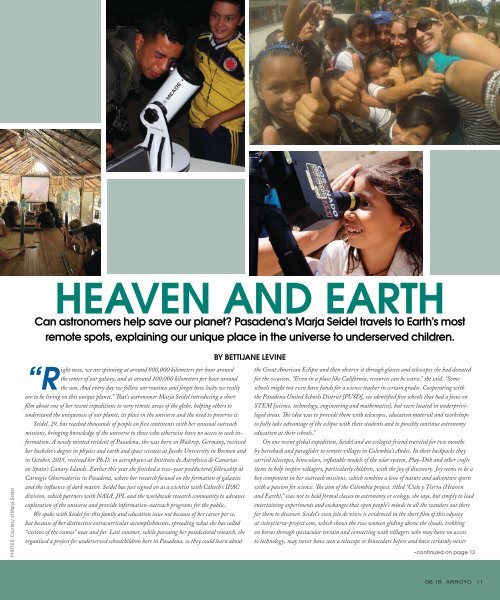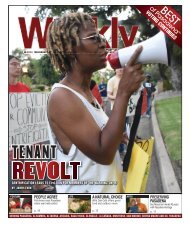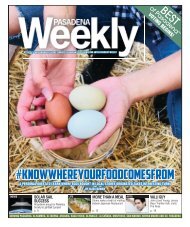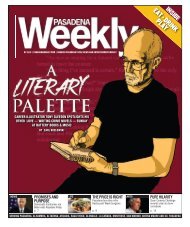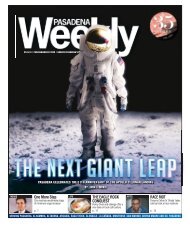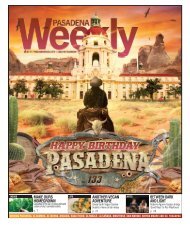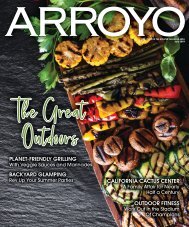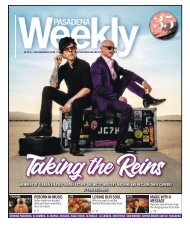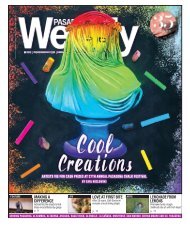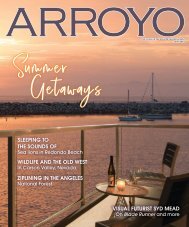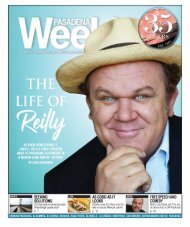Create successful ePaper yourself
Turn your PDF publications into a flip-book with our unique Google optimized e-Paper software.
HEAVEN AND EARTH<br />
Can astronomers help save our planet? Pasadena’s Marja Seidel travels to Earth’s most<br />
remote spots, explaining our unique place in the universe to underserved children.<br />
PHOTOS: Courtesy of Marja Seidel<br />
now, we are spinning at around 800,000 kilometers per hour around<br />
the center of our galaxy, and at around 100,000 kilometers per hour around<br />
“Right<br />
the sun. And every day we follow our routines and forget how lucky we really<br />
are to be living on this unique planet.” That’s astronomer Marja Seidel introducing a short<br />
film about one of her recent expeditions to very remote areas of the globe, helping others to<br />
understand the uniqueness of our planet, its place in the universe and the need to preserve it.<br />
Seidel, 29, has reached thousands of people on five continents with her unusual outreach<br />
missions, bringing knowledge of the universe to those who otherwise have no access to such information.<br />
A newly minted resident of Pasadena, she was born in Waltrop, Germany, received<br />
her bachelor’s degree in physics and earth and space sciences at Jacobs University in Bremen and<br />
in October, 2015, received her Ph.D. in astrophysics at Instituto de Astrofísica de Canarias<br />
on Spain’s Canary Islands. Earlier this year she finished a two-year postdoctoral fellowship at<br />
Carnegie Observatories in Pasadena, where her research focused on the formation of galaxies<br />
and the influence of dark matter. Seidel has just signed on as a scientist with Caltech’s IPAC<br />
division, which partners with NASA, JPL and the worldwide research community to advance<br />
exploration of the universe and provide information-outreach programs for the public.<br />
We spoke with Seidel for this family and education issue not because of her career per se,<br />
but because of her distinctive extracurricular accomplishments, spreading what she has called<br />
“visions of the cosmos” near and far. Last summer, while pursuing her postdoctoral research, she<br />
organized a project for underserved schoolchildren here in Pasadena, so they could learn about<br />
BY BETTIJANE LEVINE<br />
the Great American Eclipse and then observe it through glasses and telescopes she had donated<br />
for the occasion. “Even in a place like California, resources can be scarce,” she said. “Some<br />
schools might not even have funds for a science teacher in certain grades. Cooperating with<br />
the Pasadena United Schools District [PUSD], we identified five schools that had a focus on<br />
STEM [science, technology, engineering and mathematics), but were located in underprivileged<br />
areas. The idea was to provide them with telescopes, education material and workshops<br />
to fully take advantage of the eclipse with their students and to possibly continue astronomy<br />
education at their schools.”<br />
On one recent global expedition, Seidel and an ecologist friend traveled for two months<br />
by horseback and paraglider to remote villages in Colombia’s Andes. In their backpacks they<br />
carried telescopes, binoculars, inflatable models of the solar system, Play-Doh and other crafts<br />
items to help inspire villagers, particularly children, with the joy of discovery. Joy seems to be a<br />
key component in her outreach missions, which combine a love of nature and adventure sports<br />
with a passion for science. The aim of the Colombia project, titled “Cielo y Tierra (Heaven<br />
and Earth),” was not to hold formal classes in astronomy or ecology, she says, but simply to lead<br />
entertaining experiments and exchanges that open people’s minds to all the wonders out there<br />
for them to discover. Seidel’s own joie de vivre is evidenced in the short film of this odyssey<br />
at cieloytierra-project.com, which shows the two women gliding above the clouds, trekking<br />
on horses through spectacular terrain and connecting with villagers who may have no access<br />
to technology, may never have seen a telescope or binoculars before and have certainly never<br />
–continued on page 13<br />
08.18 | ARROYO | 11


